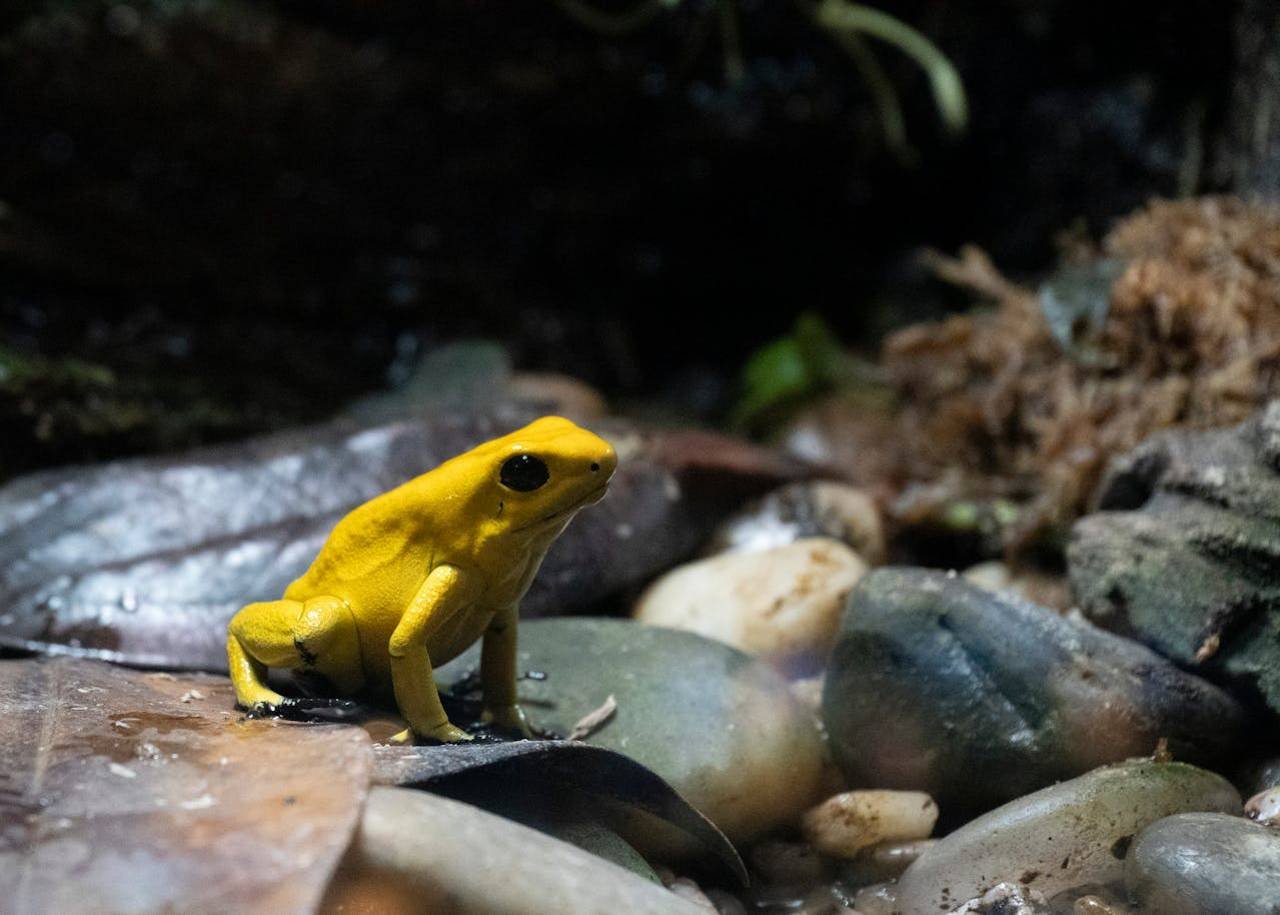While most frogs pose no threat to humans, a few species possess potent toxins that can be harmful if mishandled. These poisonous frogs are primarily found in tropical regions and are known for their bright coloration, which serves as a warning to potential predators. Let’s explore these fascinating amphibians and understand the dangers they can pose to humans.
Understanding Frog Toxicity
Frog toxicity is a defense mechanism evolved to protect these small creatures from predators. The toxins are usually present in the skin and can cause a range of effects, from mild irritation to serious health issues in predators or humans who handle them improperly.
Notable Poisonous Frog Species
1. Golden Poison Frog (Phyllobates terribilis)
- Location: Colombia
- Toxicity: The Golden Poison Frog holds the title for the world’s most poisonous frog. Its skin contains batrachotoxins, potent enough to harm or even kill humans if ingested or if it enters the bloodstream through cuts. Indigenous people have historically used the frog’s toxins for hunting by coating blow darts.
2. Black-legged Poison Frog (Phyllobates bicolor)
- Location: Colombia
- Toxicity: Similar to the Golden Poison Frog, this species produces batrachotoxins. While not as lethal to humans, contact should be avoided to prevent skin irritation or worse.
3. Kokoe Poison Frog (Phyllobates aurotaenia)
- Location: Colombia
- Toxicity: Also containing batrachotoxins, the Kokoe Poison Frog is highly toxic. Handling these frogs without protection can lead to severe consequences.
4. Dyeing Poison Dart Frog (Dendrobates tinctorius)
- Location: Northern South America
- Toxicity: Dyeing Poison Dart Frog while not as toxic as the Phyllobates species, it still possesses skin toxins that can cause irritation in humans unless neutralized by proper handling.
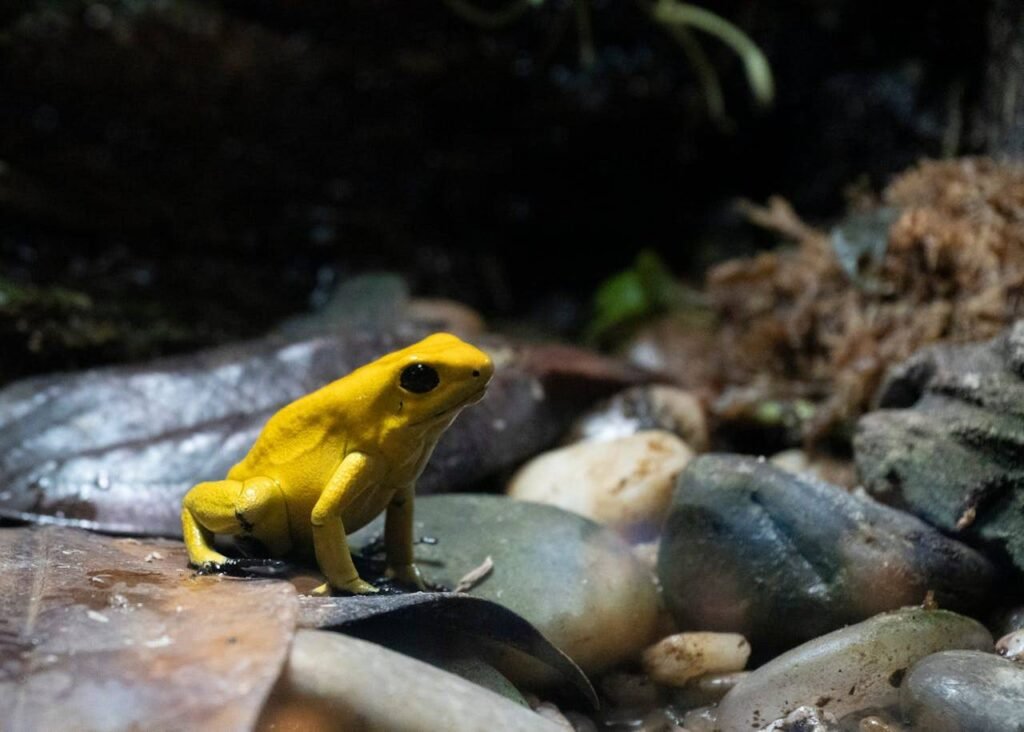
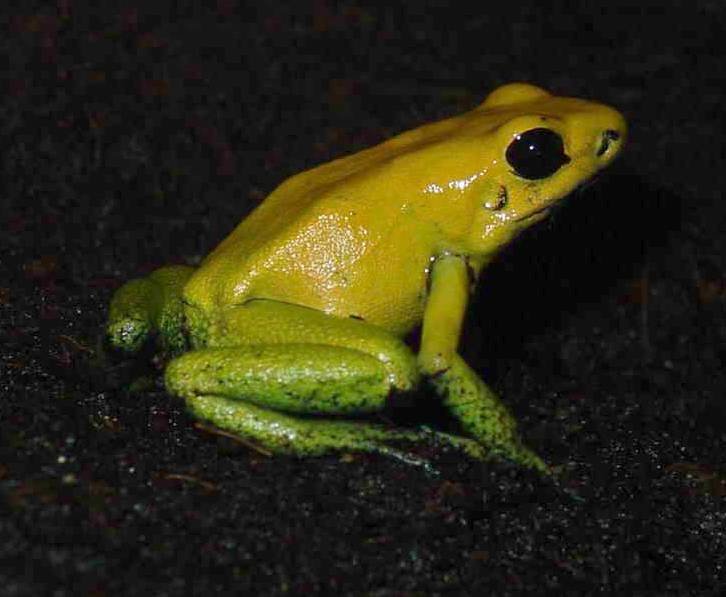
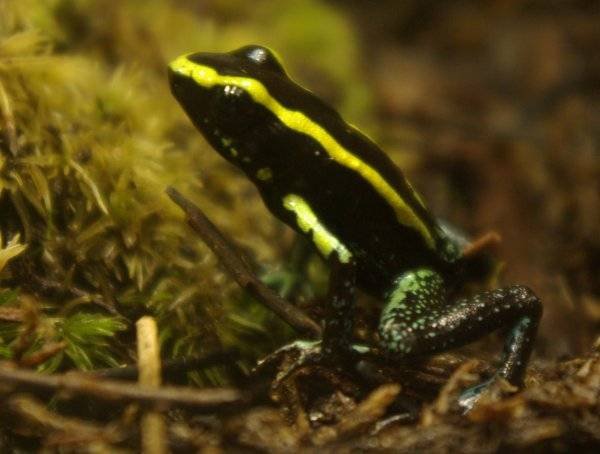
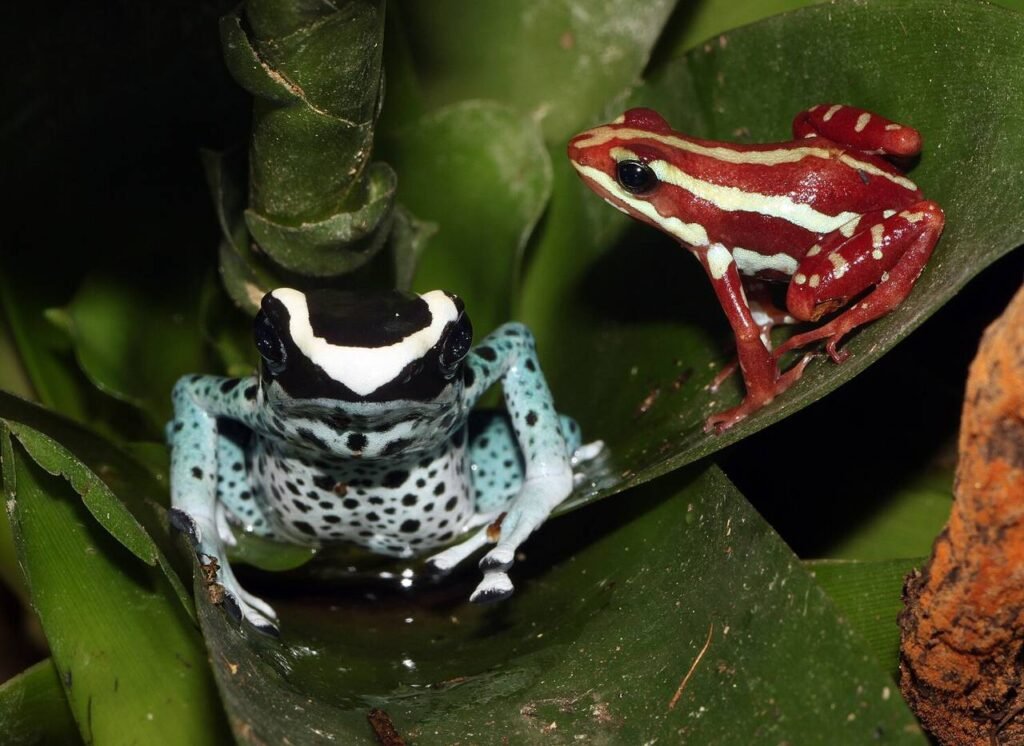
How to Stay Safe
When encountering any wild frog, it’s crucial to stay safe by following these guidelines:
- Avoid Handling: Never pick up or handle frogs with bare hands, particularly those with bright colors, which indicate possible toxicity.
- Educate Yourself: Learn about the local wildlife when traveling in tropical regions to avoid inadvertently disturbing a toxic species.
- Wash Hands Thoroughly: If you do touch a frog, ensure you wash your hands thoroughly to remove any potential toxins.
- Support Conservation Efforts: Help protect these unique species and their habitats by supporting conservation initiatives aimed at preserving their ecosystems.
FAQs About Poisonous Frogs
Are all brightly colored frogs poisonous?
Not all are poisonous, but bright colors often indicate toxicity. It’s an evolutionary signal known as aposematism designed to ward off predators.
How do frogs acquire their toxins?
Many poisonous frogs derive their toxins from their diet, specifically from alkaloid-rich insects like ants and beetles.
Can handling these frogs be fatal?
While merely touching these frogs is unlikely to be fatal, toxins can cause irritation or more severe reactions if they enter the bloodstream or are ingested.
Is there an antidote for frog toxins?
There is no specific antidote for most frog toxins, so preventing exposure through safe practices is essential.
Why are these frogs important to ecosystems?
Poisonous frogs play critical roles in regulating insect populations and serve as prey within their ecosystems, maintaining ecological balance.
How can I identify a poisonous frog in the wild?
Poisonous frogs often have bright, vivid colors as a warning signal to predators. This coloration, known as aposematism, helps deter threats and indicates potential danger.
Are there any medicinal uses for frog toxins?
Certain frog toxins have been studied for their potential medicinal benefits, including pain relief and other pharmaceutical applications. However, these uses are still under research.
Do all poison dart frogs lose their toxicity in captivity?
Yes, many poison dart frogs lose their toxicity in captivity since their poisonous properties are often derived from a specific diet found only in the wild.
What should I do if I accidentally touch a poisonous frog?
Immediately wash your hands with soap and water to remove any potential toxins from your skin. Avoid touching your face, especially your eyes and mouth, until your hands are thoroughly clean.
Are there any signs of a toxic reaction after contact with a poisonous frog?
Signs of a potential toxic reaction can include skin irritation, redness, numbness, or a burning sensation. If you experience severe symptoms, seek medical attention promptly.

